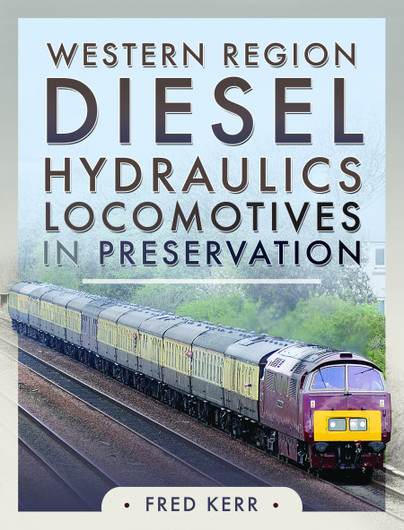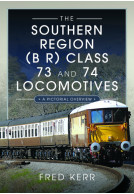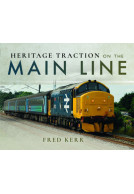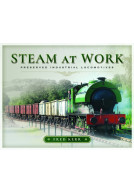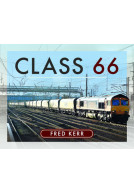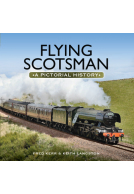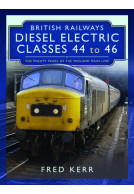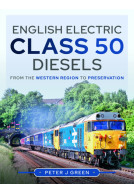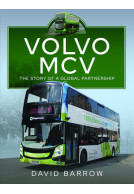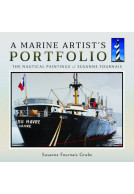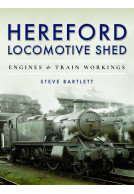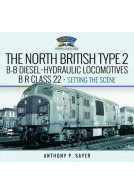Western Region Diesel Hydraulic Locomotives in Preservation (Hardback)
Imprint: Pen & Sword Transport
Pages: 128
Illustrations: 200 colour illustrations
ISBN: 9781399004930
Published: 27th April 2022
(click here for international delivery rates)
Order within the next 51 minutes to get your order processed the next working day!
Need a currency converter? Check XE.com for live rates
| Other formats available - Buy the Hardback and get the eBook for £1.99! | Price |
|---|---|
| Western Region Diesel Hydraulic… ePub (71.5 MB) Add to Basket | £9.98 |
When British Railways initiated its Modernisation Plan in 1955, its Western Region elected to trial locomotive designs with hydraulic transmission whilst BR encouraged designs with electric transmission. The Western Region felt that the lighter weight of 78 tons for a diesel hydraulic locomotive producing 2000 hp, compared to an equivalent weight of 132 tons for a diesel electric locomotive producing 2000 hp, would better meet BR’s requirement for a modern locomotive. BR’s failure to follow up with its declared policy of having all freight vehicles fitted with brakes saw operators preferring the heavier diesel electric designs which proved more able to operate trains without through brakes at higher speed. The greatest concern was with operating costs whereby the Western Region policy of replacing components at the depot then transferring them to Swindon for repair incurred heavy costs that were reflected in the maintenance cost per locomotive. Given the smaller number of diesel hydraulic locomotives and the larger number of diesel electric locomotives it was little surprise that by the mid-1960s a cost comparison showed that the build and operation of diesel electric locomotives was increasingly cheaper over the long term. Furthermore the increased availability of diesel electric locomotives released by a combination of factors provided an opportunity to replace the diesel hydraulic fleet, which was withdrawn from service during the 1970s. The preservation of redundant locomotives was slow but once it was confirmed, by the preservation of ‘Hymek’ Class 35 D7017 in 1975, that public appeals could quickly fund the preservation of withdrawn examples further public appeals followed. In a short space of time 31 locomotives from a mixed fleet of 358 locomotives entered preservation to remind both enthusiasts and the public of a concept (i.e. hydraulic transmission) that had had much to offer but had been dismissed on questionable financial grounds.
As featured by
The Broad Gauge Society
This 124 page book illustrates the survivors from the Western Region’s unique fleet of diesel hydraulic locos, ie classes 14, 35, 42 and 52. A short introduction explains how the fleet came to be built, and each chapter is prefaced with remarks on the individual class it covers. From then on the story is told by way of captions to the full colour images used throughout the book.
West Somerset Railway Association
As one would expect from where the survivors happen to be based, there is plenty of coverage of the locomotives at work on the West Somerset Railway, the East Lancs Railway, Severn Valley Railway and other heritage lines, but since the main line certification of D1015 “Western Champion”, we see this loco at work on the national network at locations such as Conwy, Leyland and on the ascent to Shap. The Class 52 Westerns were particularly attractive and well proportioned locos, and they make a fine sight against the familiar backdrops of our preserved lines, and no less so on the Settle and Carlisle.
The views captured are a mixture showing trains in passenger service as well as on shed and in preparation, with considerable ‘clag’ in some to delight the onlookers. It seems that most of the liveries worn by these locos in their ordinary service days are included (as well as more than one which wasn’t), but this reviewer’s favourite view is of preservation pioneer D7017 wearing overall blue with a small yellow panel as it double-heads a train away from Blue Anchor on the WSR along with D1010 “Western Campaigner”.
Readers with a fondness for the WR’s diesel hydraulics and those enjoying their work in preservation are sure to find something of interest in this book.
Review as featured in
Railways Illustrated
Highlight: Well designed and presented... this photobook is bound to be of interest.
Author featured in 'Shoot the Steam'
Digital Camera World
As featured in
The Bookseller
This is a great volume. Excellent photograps and text. Highly recommended
James Simmonds
About Fred Kerr
Fred Kerr is a photographer whose lifelong interest in railways began in Edinburgh during the early 1950s and has continued throughout his life since. His family move to Northamptonshire in 1956 introduced him to the Midland Main Line where the transition from steam to diesel traction became important as Derby Works reflected the change with new locomotives being tested and introduced to service. His early ventures into photography began in 1961 but became established during his University years in the early 1970s. Taking early retirement in 1994 he has spent time working for Colin Garratt, a muse whose inspiration provided opportunities to photograph railway scenes that have proved to be historic as the railway undergoes changes in both its structures and operations.







